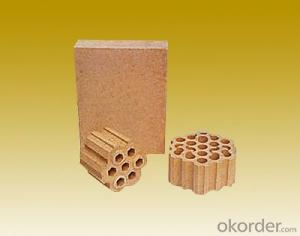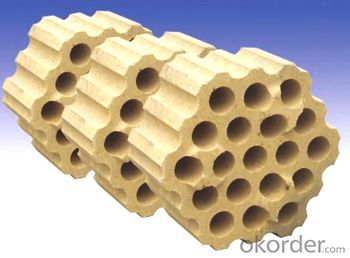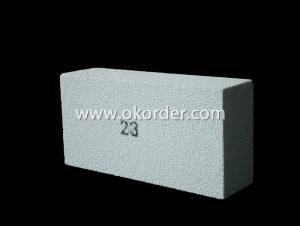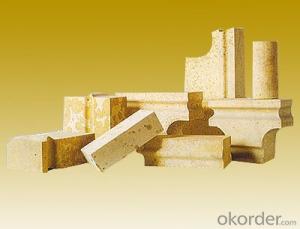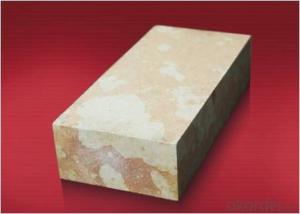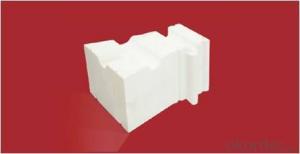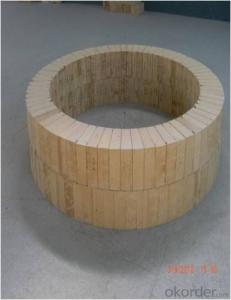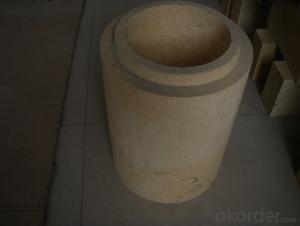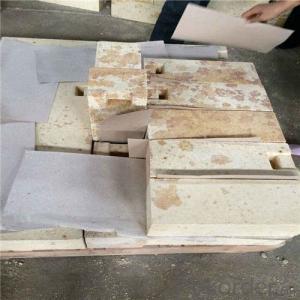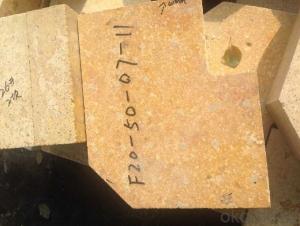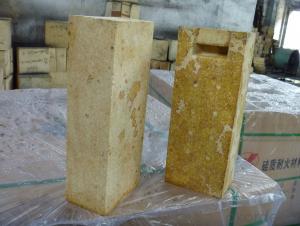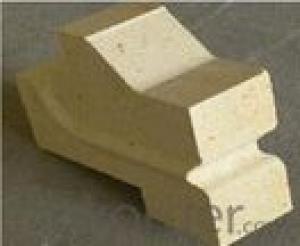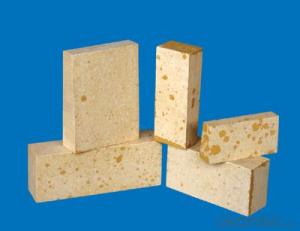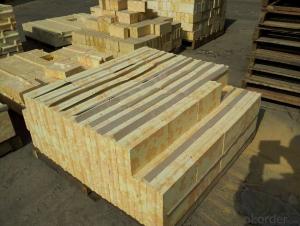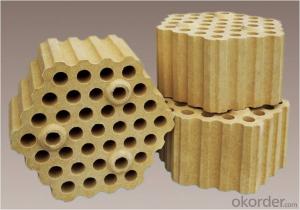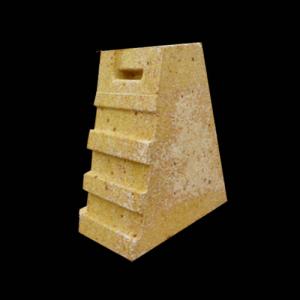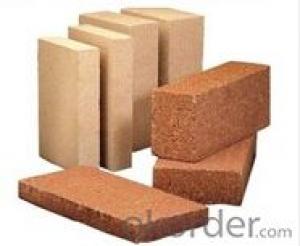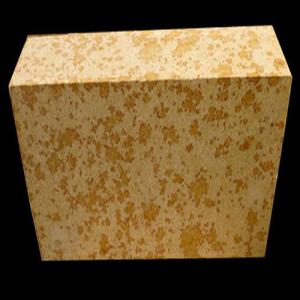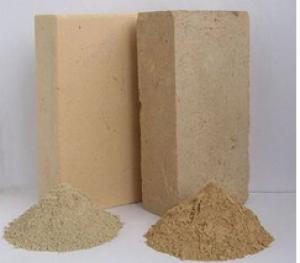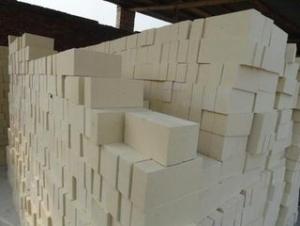Silica Fire Bricks for Hot Blast Stove
- Loading Port:
- Qingdao
- Payment Terms:
- TT OR LC
- Min Order Qty:
- 100 PCS
- Supply Capability:
- 50000 PCS/month
OKorder Service Pledge
OKorder Financial Service
You Might Also Like
Specifications
1.High refractoriness under load.
2.High heat conductivity.
3.Good thermal shock resistance.
4.Solidity stable of capacity
Typical Features:
1.High refractoriness under load.
2.High heat conductivity.
3.Good thermal shock resistance.
4.Solidity stable of capacity
Applications:
1.Silica brick is the main refractory bricks used in glass melting furnace;It has high refractoriness
2.Silica brick for glass melting furnace is used in building checker chamber, chute, combustion chamber,coking 3.chamber,and furnace arch etc.
4.Silica bricks and fireclay bricks are all acid-resistant bricks.They can be used for glass furnace and other acid
industrial furnace.
Specification:
Item /Specification | High quality silica brick |
SiO2 % ≥ | 94 |
Fe2O3% ≤ | 1.0 |
Meltability Index% ≤ | 1.0 |
True Density g/cm3 ≤ | 2.36 |
Refractoriness°C≥ | 1730 |
refractoriness under load ≥°C | 1650 |
Apparent Porosity%≤ | 25 |
Cold crushing strength ≥Mpa | 25 |
Reheating Linear Change1450°C×.2h ≤% | +0.2 |
Packaging & Delivery
| Packaging Detail: | in plastic sheets and then in wooden pallets |
| Delivery Detail: | about 30 days or as your requirement |
- Q: The specific content is what gb/t2608-2012 brick
- Quality assessment procedures, packaging, marking, transport, storage, and quality certificates. Suitable for siliceous refractory bricks.
- Q: Semisilica brick interpretation
- Good thermal shock resistance. In use, more high viscosity glass phase can be formed, and the masonry brick joint and the working surface are dense and the masonry is complete, which is beneficial to improve the impermeability of the masonry and reduce the erosion effect of the slag on the masonry.
- Q: Why is the new trend of the high thermal conductivity of silica brick
- The high thermal conductivity of silica brick all inherits the advantages of traditional coke oven silica brick, on the basis of further highlight the characteristics of high thermal conductivity.
- Q: Such purpose and scope please give me detailed points thank you because I am learning stage
- Acidic silica brick refractory material, has good acid resistance and slag erosion, softening temperature is as high as 1640 to 1670 DEG C, in the long-term use volume is relatively stable under high temperature. The silica mineral phase is mainly composed of tridymite and cristobalite, there is a small amount of quartz and glass. Tridymite and cristobalite and quartz remaining at low temperature due to phase change, volume changes greatly, so the brick thermal stability at low temperature is very poor. In use, under 800 degrees Celsius, slowly heating and cooling, so as not to produce cracks. The use of temperature in blast furnace so should not be below 800 DEG on. The properties and process of silica crystal with SiO2 transformation is closely related, therefore, the proportion of it is one of the important quality indexes of silica brick. General requirements below 2.38, high quality silica brick should be less than 2.35. The true density is small, reflecting a large number of scale quartz and square quartz in the brick, the residual quartz is small, so the residual line expansion is small, and the strength is decreased in useThe raw materials for the manufacture of silica brick. The higher the SiO2 content of silica raw material, the higher the refractoriness. The most harmful impurities are Al2O3, K2O, Na2O and so on. They seriously reduce the refractoriness of refractory products. Brick with SiO2 content of not less than 96% of silica as raw materials, adding mineralizer (e.g. millscale, lime) and binder (such as molasses, sulfite pulp waste liquid), after mixing, molding, drying, sintering and other processes in the system.
- Q: Semisilica brick, clay brick, high alumina brick and what is the difference?
- This is a kind of refractory material is divided into three types: semisilica brick (A12O315 ~ 30%), clay brick (A12O330 ~ 48%), high aluminum brick (A12O3>48%).
- Q: What role does silica play in refractories?
- Low fractory refers to the alumina content between 10%~30%, SiO2 content is less than 85%, semisilica brick SiO2 = 65%,The SiO2 content of not less than 93%, refractory material to natural quartz rock as the main raw materials are called silica, silica brick, silica brick, quartz glass and special products. China's literature generally put this type of product is called "siliceous refractory products", which is the most important brick.
- Q: The brick is mainly used in the place?
- Partitions used in coking and combustion chambers for coke ovens
- Q: Brick
- Acidic silica brick refractory material, has good acid resistance and slag erosion, softening temperature is as high as 1640 to 1670 DEG C, in the long-term use volume is relatively stable under high temperature.
- Q: The chemical composition of silica brick and its physicochemical index?
- ????Al2O3 SiO2??????fe2o3??????cao???????r2o93~98?0.5~2.5?;;?0.3~2.5??0.2~2.7;??1~1.5;
- Q: Why in the production of the brick to detect the volume density
- Density is the property of material, different density of materials, density of the same kind of material is not up to standard, affecting performance.
Send your message to us
Silica Fire Bricks for Hot Blast Stove
- Loading Port:
- Qingdao
- Payment Terms:
- TT OR LC
- Min Order Qty:
- 100 PCS
- Supply Capability:
- 50000 PCS/month
OKorder Service Pledge
OKorder Financial Service
Similar products
Hot products
Hot Searches
Related keywords
